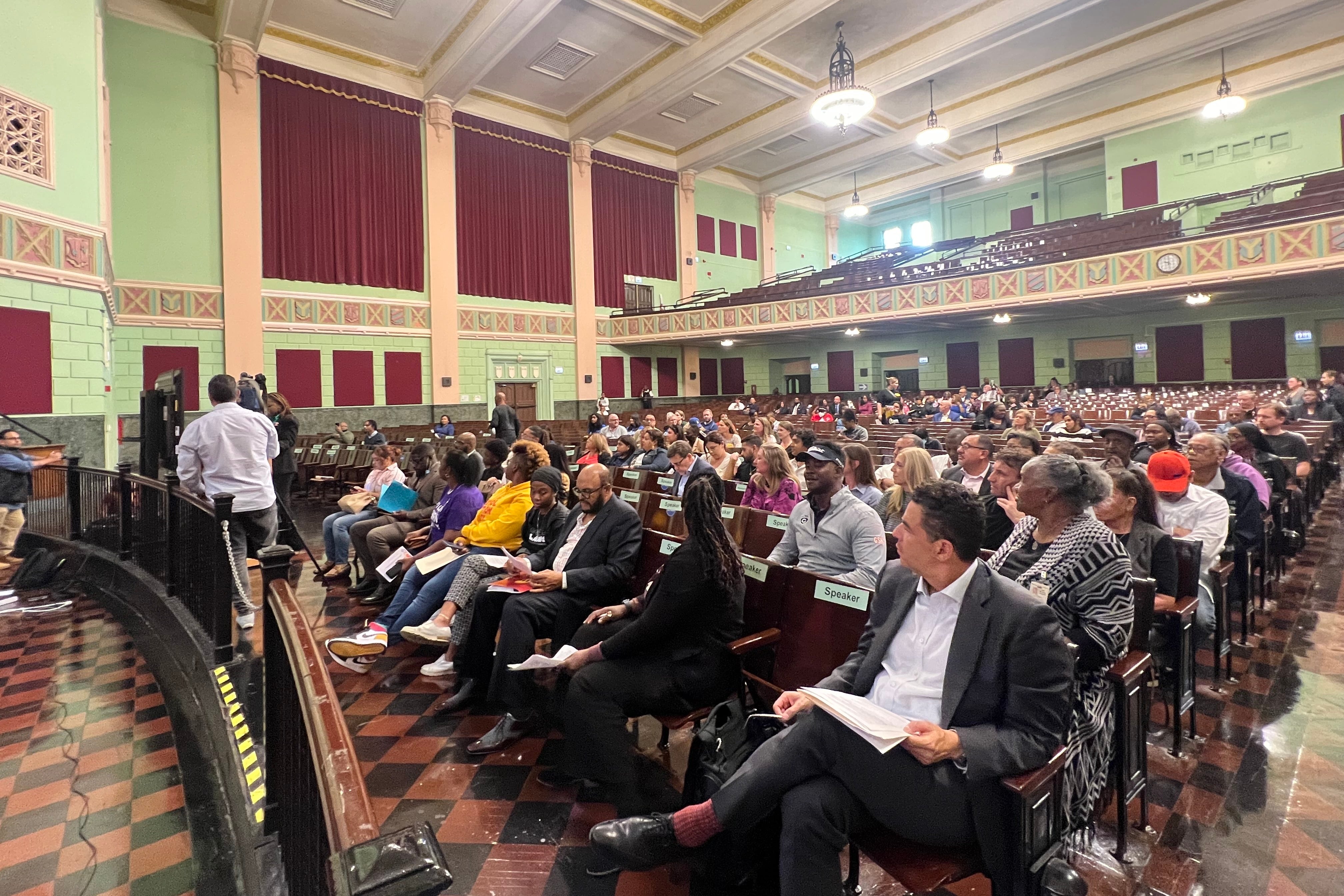Chicago Public Schools facilities need $3.1 billion in “critical” repairs that must be addressed in the next five years, according to a district plan released Thursday.
The cost is part of a total of $14.4 billion in updates that the district identified in its Facilities Master Plan, which CPS is required by state law to produce every five years.
“In a district as large as ours, and with a building portfolio as old as ours, this is the investment it would take to repair and modernize each and every one of our current facilities and give our students the learning environment we know they deserve,” CEO Pedro Martinez wrote in the plan’s introduction.
The $3.1 billion in costs identified as the most urgent work includes repairs to windows, roofs, masonry, and heating and cooling systems. Another $5.5 billion would go toward repairs in the next six to 10 years, according to the facilities plan. Beyond that, the district wants money to build labs “to support STEM education,” accommodations for students with disabilities, new auditoriums, new fields for sports, and classrooms “outfitted” for career and technical education — programming that Martinez wants to expand, according to the plan.
The district released the plan during Thursday’s Board of Education meeting, which was held in the auditorium of Austin Career and College Academy High School on the West Side and drew at least 200 observers. The changed location was the board’s attempt to address the longstanding criticism that the meetings, which are typically held during the day downtown, are inaccessible for many families and teachers who work during the day. (The last meeting held outside of district headquarters was in 2019, according to a district spokesperson.)
District officials said this summer that they had budgeted $155 million for facilities projects this fiscal year — roughly $600 million less than the previous year — and planned to ask for more capital funding this year.
Martinez used the plan to make another plea for more funding and “partnerships” from the city, state, and federal government. Martinez plans to press the state for more money as a way to address costs once COVID relief dollars run out in 2024.
“This plan will take coalitions and partnerships with our fellow officials at the city, state, and federal levels,” he wrote in his introduction to the plan. “It will take administrators, teachers, parents, students, and advocates pushing for the changes we need.”
Martinez said the facilities plan is a “critical” early part of its process to create a five-year strategic plan for CPS. That plan — which will build on Martinez’s three-year blueprint released last year to help the district recover from the pandemic — will be finalized next summer.
The district will also launch an advisory team that would make recommendations to Martinez on how to narrow academic disparities of Black students compared to their peers. Those recommendations would also inform a “Black Student Success Plan” and be part of the strategic plan, according to CPS.
Some advocates, however, immediately rejected that idea Thursday night. They had previously pressed officials to create a Board of Education committee that focused on Black student achievement.
“To have a strategic plan is not enough to say, ‘Oh, we hear you,’” said Valerie Leonard, a longtime West Side education advocate and the co-founder of Illinois African Americans For Equitable Redistricting. “I want to know that you see me; I want to know there is some action. At what point will Black children be prioritized?”
District officials are asking for community feedback as they develop the strategic plan. The public meetings to gather that input will be on:
- 6-7:30 p.m. October 17 at Kelvyn Park High School, 4343 W. Wrightwood Ave.
- 6 - 7:30 p.m. October 18 at Westinghouse College Prep, 3223 W. Franklin Blvd.
- 10 a.m. - noon October 21, virtual meeting
- 6 - 7 p.m. October 23, Little Village high school campus, 3120 S. Kostner Ave.
- 6 - 7:30 p.m. Julian High School, 10330 S. Elizabeth St.
Those wishing to attend should register here.
The facilities plan includes information like enrollment trends to highlight the district’s needs. District officials offered more analysis Thursday of enrollment this year.
Chicago Public Schools enrollment grows by nearly 1,200
Preliminary data on the 20th day of school — when district officials tally up students for the year — indicated that enrollment, at just over 322,500 students, is essentially flat compared to last year, Chalkbeat reported last week. On Thursday, officials revealed that 323,291 students were enrolled, or nearly 1,200 more students than last year.
It’s the first time since 2011 that the district’s enrollment has not dipped. Since that year, enrollment declines were driven by several factors, including population changes and dipping birth rates. Last year’s decline cost CPS’ title as the nation’s third largest school district.
The small enrollment bump was due to fewer students leaving and more new students, including a 7% increase in preschool students, officials said. Additionally, the number of students living in temporary housing increased by 47%, which could be one sign of an increase in migrant students who are living in shelters or other temporary circumstances.
The district does not track students’ immigration status. But another sign that the population of newly enrolled migrant students is growing is the increasing number of English language learners. About 7,800 more English learners enrolled this year than last year, officials said. CPS typically enrolls an average of 3,000 new English learners a year.
English language learners now make up nearly a quarter of the district’s students, up from 22% last year, according to Chalkbeat’s analysis.
Reema Amin is a reporter covering Chicago Public Schools. Contact Reema at ramin@chalkbeat.org.







